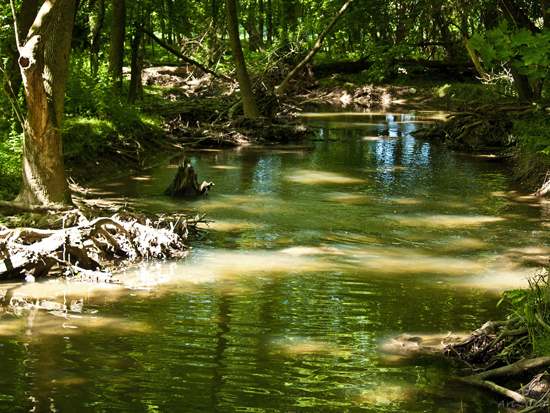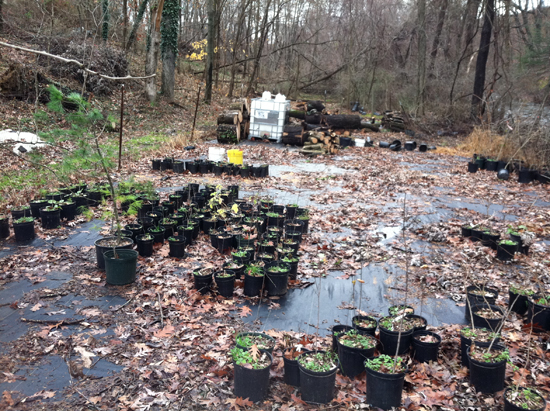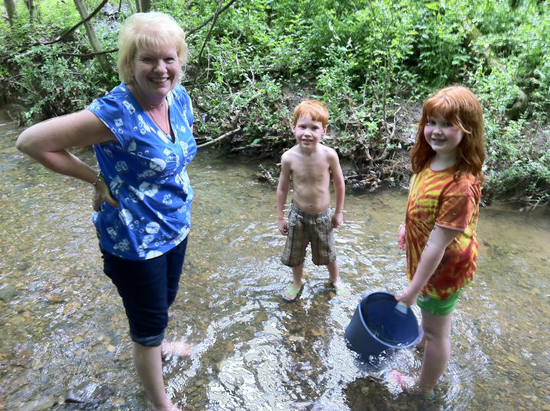Watershed Wednesday: Paxton Creek Watershed and Education Association (Dauphin County, Pa.)
PCWEA is a volunteer organization that’s working to restore Paxton Creek and cultivate a new generation of environmental stewards.
Every summer of my childhood, I dug for crayfish, collected rocks and even searched for treasure in Paxton Creek, a stream that ran through my neighborhood park in Harrisburg, Pennsylvania. Little did I know that this stream flowed into the Susquehanna River, a tributary of the nation’s largest estuary. Reflecting on these childhood experiences, I realize that Paxton Creek may have been where I first cultivated my affection for the natural world.

(Image courtesy Artman1122/Flickr)
Soon after beginning at the Bay Program, I discovered the Paxton Creek Watershed and Education Association (PCWEA), a volunteer organization that’s working to restore this stream and cultivate a new generation of environmentalists as they comb its waters for crayfish.
As its name suggests, PCWEA’s mission is more than “science”; the organization places just as much emphasis on creating environmental education opportunities and fostering community relationships.
PWCEA’s projects range from a community-wide Crayfish Crawl to control the invasive rusty crayfish to a tour of stormwater best management practices that neighborhoods, schools and localities have adopted to help reduce pollution. Because Paxton Creek flows from rural areas in the headwaters (near Blue Mountain) to the city of Harrisburg, PCWEA volunteers have the opportunity to work at the interface of urban, suburban and rural environments.
Paxton Creek’s biggest threat is pressures from development, which has inundated the upper portion of the watershed since PCWEA was established in 2001. The creek’s upland portions flow through Harrisburg’s suburbs – areas that were once farms and woodlands. Even since I left the area in 2005, abandoned fields and wooded lots have been converted into gas stations, housing developments and shopping centers. Sure, this means that many of the secret hideouts of my childhood have disappeared, but it also means that there are more roads, parking lots and buildings. These paved, or impervious, surfaces do not allow stormwater to soak into the ground; instead, it flows into storm drains, carrying oil, pet waste and other pollutants along with it.
But just because PCWEA doesn’t like impervious surfaces doesn’t mean that the group is against development. Instead, it views the changing land use patterns and rapidly increasing population as an opportunity to promote sustainable growth and influence new residents to install beneficial landscaping techniques.
“There are modes of development that can achieve satisfactory runoff infiltration with less impervious surface,” E. Drannon Buskirk writes in PCWEA’s latest newsletter.
PCWEA has partnered with the Susquehanna River Basin Commission to showcase best management practices already implemented in the creek’s 27-square-mile watershed. Residents can view rain gardens, rain barrels and conservation landscaping examples, or they can take an online tour of the sites.
In case you’d rather see the other end of the spectrum, PCWEA has compiled a driving and online tour of “hot spots”: streamside areas that are eroding and contributing sediment pollution to the creek.
PCWEA seeks to reduce impervious surfaces and sediment pollution, but it is also interested in involving the community’s 60,000 stakeholders in community greening projects.
My favorite PCWEA project: A streamside tree nursery
PCWEA has a streamside tree nursery in my old neighborhood park, Shutt Mill Park. Community members work together to maintain the nursery.

These trees keep the soil in place, preventing sediment pollution from clouding the creek. Also, their roots absorb rainwater, which reduces flooding and stormwater runoff. And as these trees mature, they will provide habitat for wildlife and shade the creek, keeping water temperatures cool.
Do you live near Paxton Creek? Get involved today!
There are plenty of opportunities for people to help restore and protect Paxton Creek, such as tabling at the Dauphin County Wetlands Festival, leading youngsters in creek explorations, and implementing sustainable landscaping practices on your own property.

(Image courtesy Paxton Creek Watershed and Education Association)
Contact PCWEA for more information on how you can help Paxton Creek.

Comments
There are no comments.
Thank you!
Your comment has been received. Before it can be published, the comment will be reviewed by our team to ensure it adheres with our rules of engagement.
Back to recent stories